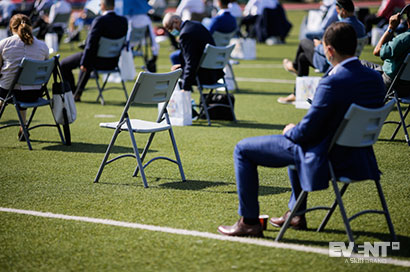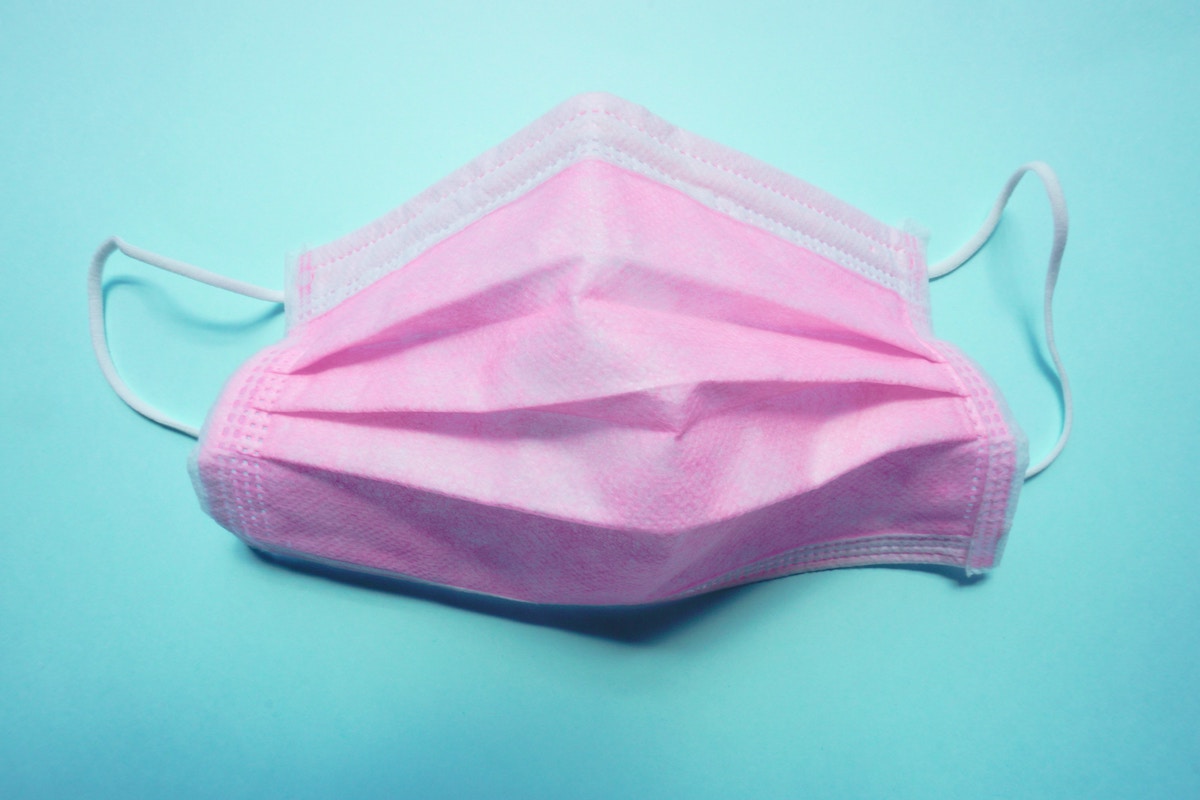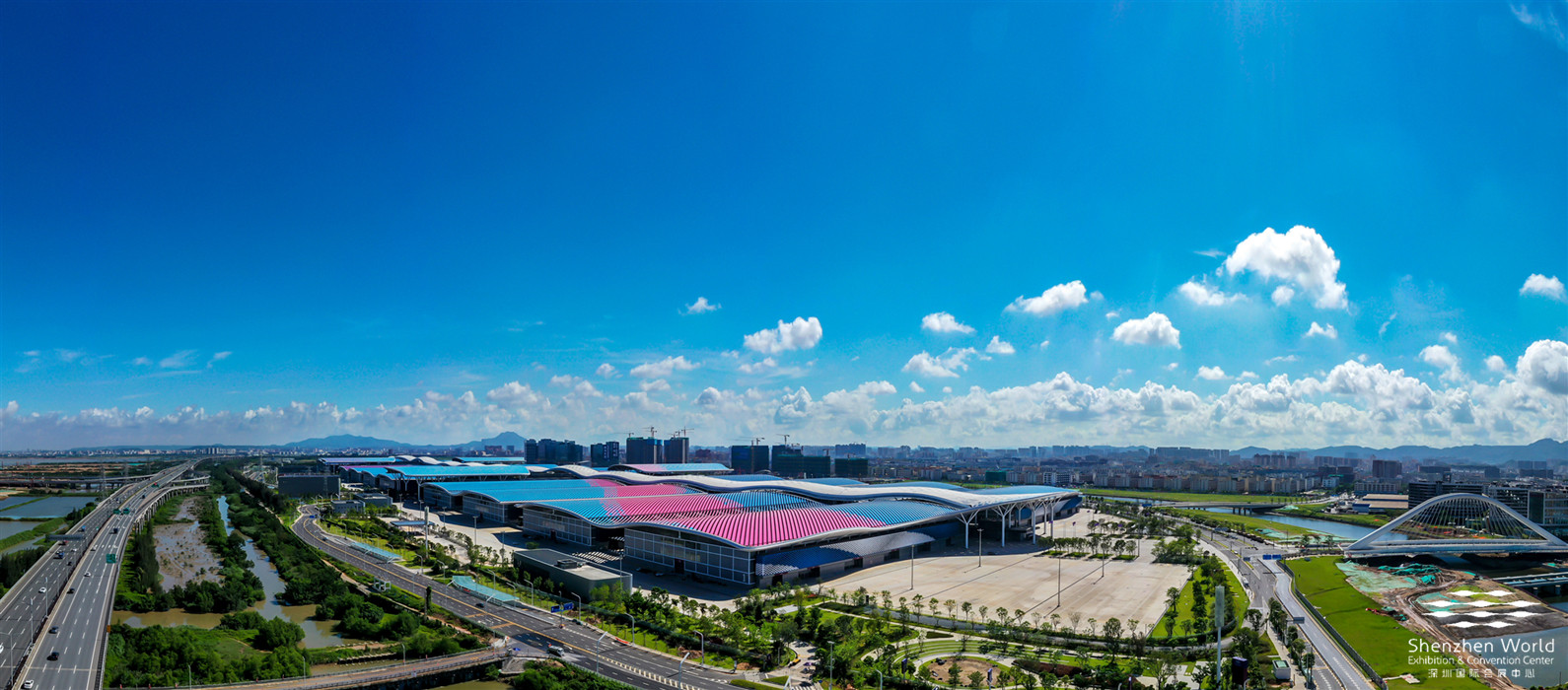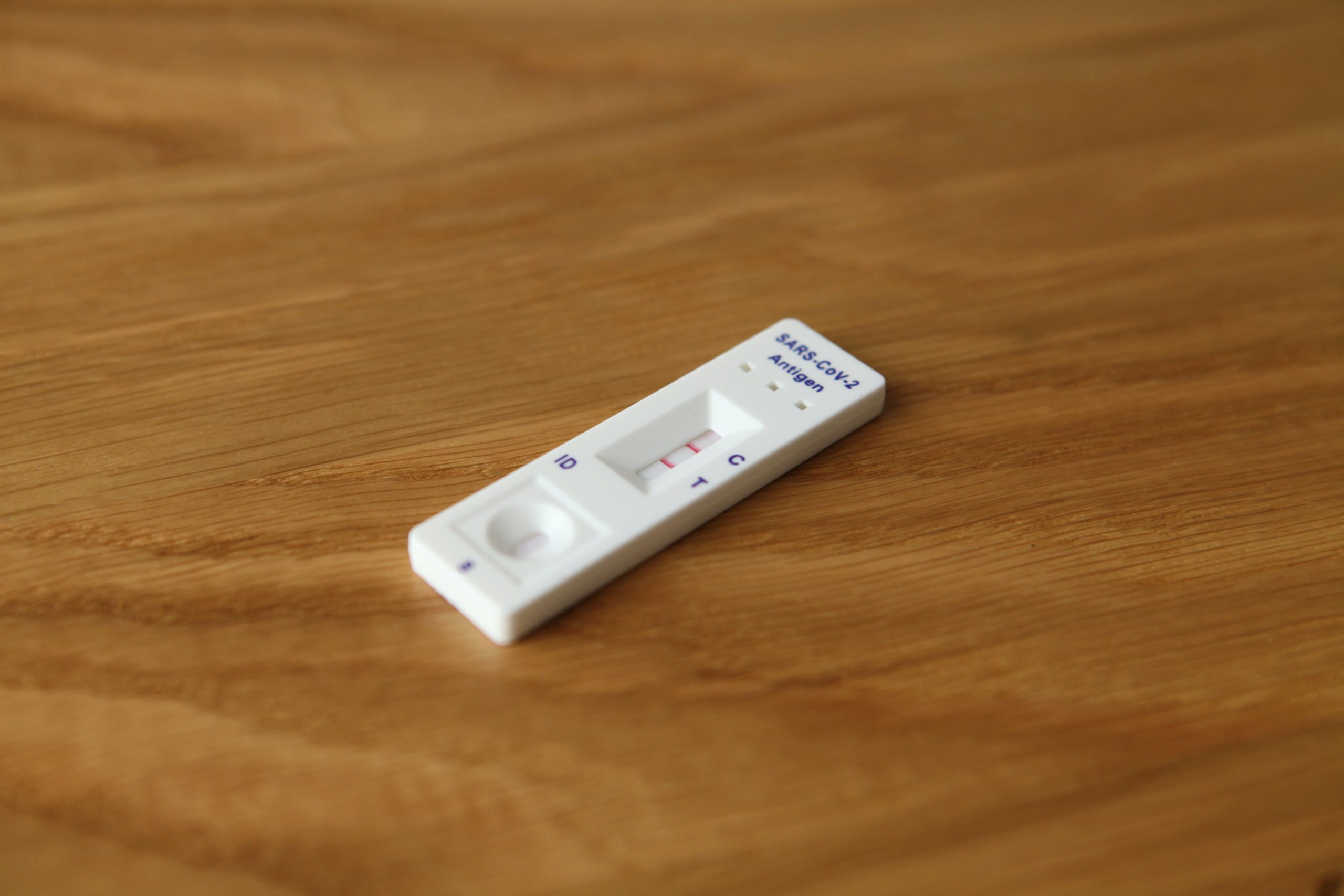Skift Take
Social distancing has been both the crux of Covid-19 safety measures and the single biggest bane to events, but new research suggests that the six-foot rule needs revising: planners may be more restricted in some ways, less in others. Here's why.
Although ‘social distancing’ is a term that dates back to 2003, it didn’t enter common usage until Covid-19. Now that it’s part of everyday vocabulary, some researchers are questioning what it really means in practical terms.
Is there a set distance that we can consider safe in all situations? Most regulatory authorities have set guidelines that range roughly between three to six feet (or one to two meters).
According to a recent article published in the British Medical Journal (BMJ), however, these ballpark guidelines are based on a combination of decades-old research and oversimplified interpretations of newer studies. More to the point, the authors claim that this one-size-fits-all approach to physical distancing ignores the complexity of factors involved.
What might be a reasonably safe distance in one context could be dangerously close in another, the researchers argue. If they’re right, the implications for the events industry could be far reaching.
Is Six Feet of Distance Still a Good Rule of Thumb?
In Two Metres or One: What Is the Evidence for Physical Distancing in Covid-19?, researchers propose a new system that provides context-dependent guidelines for physical distancing:
“Instead of single, fixed physical distance rules, we propose graded recommendations that better reflect the multiple factors that combine to determine risk. This would provide greater protection in the highest risk settings but also greater freedom in lower risk settings, potentially enabling a return towards normality in some aspects of social and economic life.”
Without saying it directly, the researchers are ultimately implying that six feet might not be enough in some situations, but could be excessive in others.
When Would Six Feet Be Too Close?
Despite starting their article with a note of optimism, the researchers really drive home some less-than-encouraging news. They begin by discussing commonly-held theories on two methods of transmission: via droplets and via aerosolized particles.
For a virus to be considered ‘airborne,’ it has to be transmissible through the second of these (aerosolized particles). Viral droplets aren’t supposed to travel far, so they’re not considered ‘airborne’ in the strict sense of the word. Further, researchers initially believed that Covid-19 only spread through droplets, not aerosolized particles.
The study’s authors raise several objections to this line of thinking, but their arguments ultimately boil down to two main points:
- Droplets can sometimes travel farther than six feet.
- Although the research is still not firmly conclusive, there is growing evidence that Covid-19 can be spread through aerosolized particles.
What does this mean in practical terms? Here are some factors to keep in mind.
Sneezing and Coughing
If an infected person is sneezing or coughing, the virus could travel much farther than six feet. In fact, eight out of ten recent studies found that the virus could travel beyond this distance, with one measuring lengths as far as six to eight meters (roughly 19 to 26 feet).
As the BMJ article points out, this means that even people who are sneezing or coughing due to allergies should be excluded from indoor gatherings; if they are asymptomatic or presymptomatic carriers, they could be spreading the virus much farther than six feet.
Activities that Exacerbate Spread
Sneezing and coughing aren’t the only ways to propel viral particles across long distances. Breathing heavily during exercise, singing, and even speaking loudly can all extend the potential radius for transmission risk.
Artificially Concentrated Air Flow
Air conditioning and forced-air heating systems can create strong air currents within an indoor setting, and these currents can in turn carry small droplets and aerosolized particles farther than six feet. In a now notorious incident at a Chinese restaurant, multiple patrons sitting in the direct line of an air-conditioning unit were infected by a single presymptomatic carrier sitting as far as 4.6 meters (15 feet) away.
The article’s authors suggest modelling the airflow in your space to be aware of higher-risk areas.
Duration of Exposure
While five to fifteen minutes of close contact with an infected person is often used as the threshold for potential transmission, the article notes that there is little hard data to substantiate this benchmark.
Instead of arguing that this gold standard is wrong, the authors suggest that duration needs to be considered together with all the other factors. For example, they point out that one study showed aerosolized SARS-CoV-2 particles could remain viable for up to 16 hours. Even if individual exhalations release only tiny traces of infectious aerosols, there is the potential for ambient viral particles to accumulate over time in enclosed spaces.
An outbreak at a South Korean call center serves as a prime example of this phenomenon. Almost all of the infected people worked on one office floor, and less than one percent of those on other floors became sick (despite many being in close contact with carriers for short periods, such as in elevators).
To summarize, being 20 feet from an infected person for eight hours could be more dangerous than being two feet from a carrier for five minutes.
What’s the Good News?
It’s not all doom and gloom. The researchers point to four main factors that can drastically cut down on the risk of transmission:
- Being outdoors. According to one Japanese preprint study, there is almost 19 times more risk of transmission indoors vs. outdoors. When possible, organize activities and activations outside.
- Wearing masks. Masks not only block larger droplets from being emitted; they also reduce the velocity of the particles that make it through the mask’s barrier (in turn shortening how far these droplets can travel). Make wearing a mask mandatory at all gatherings.
- Improving ventilation. Strategic airflow can help to prevent droplets from being carried long distances, while filtration methods and outdoor venting can significantly reduce the accumulation of ambient viral aerosols. Engage venue partners in achieving safer ventilation and filtration.
- Talking quietly or sitting silently. Just as singing and panting can increase risk, the inverse can reduce it. Plan for passive learning and content processing indoors, and move collaborative activities and networking outside.
What does this mean for events? If your event is outdoors or in a well-ventilated space and people are wearing masks, the risk posed by short periods of close contact may be relatively low.
What’s the Bad News?
Many planners eager to get back to live events will welcome the idea that some circumstances may allow them to increase their event capacities to more viable levels, but the research is not as promising as its optimistic introduction might have you believe.
Of the risk-exacerbating factors discussed in the article, most are both commonplace and difficult to avoid at events: gathering indoors, speaking or talking loudly, using air conditioning or forced air. The scenarios that allow for increased capacities are mostly limited to outdoor settings or exceptionally well-ventilated facilities.
But the bigger risk to events has to do with the inverse relationship between rule complexity and compliance. It’s not hard to imagine a scenario where a crowd coming inside from an outdoor networking event fails to resume indoor-level social distancing, particularly if that distance now exceeds six feet.
The rationale for having one fixed distance was not only that it followed the best information available at the time; it was that people need simplicity in order to follow a directive for any length of time or with any consistency. Creating a nuanced and contextual set of shifting recommendations for a large crowd’s safety is a Creating a nuanced and contextual set of shifting recommendations for a large crowd’s safety is setting event planners up to fail. From a regulatory standpoint, it would be difficult to systematize let alone enforce.
IN CONCLUSION
The article’s authors emphasize that their guidelines are qualitative rather than quantitative: They don’t provide specific distances that they consider safe for specific contexts. Their main point is that social distancing rules should take into account multiple risk factors.
While indoor events that involve singing may be unwise even if everyone remains six feet apart, close-contact masked conversations in a well-ventilated space may be safe for short periods. Here are some general tips to keep in mind if you want to reduce the risk of transmission at your events:
- Ask anyone who is sneezing or coughing to stay home, even if their symptoms are likely from allergies or asthma.
- Keep background volumes low in order to prevent attendees from having to raise their voices or speak over one another.
- Insist that attendees wear masks whenever possible.
- Try to keep unmasked activities (such as eating and drinking) limited to short durations with low occupancy numbers, and hold them outdoors whenever possible.
- Invest in an upgraded ventilation system and be aware of airflow directions.
Effective social distancing is more about a series of strategies than it is about a single hard-and-fast rule to keep six feet apart at all times. While some types of events may not be safe to hold until we have a vaccine, others may be possible at higher occupancy rates than are currently the norm.






